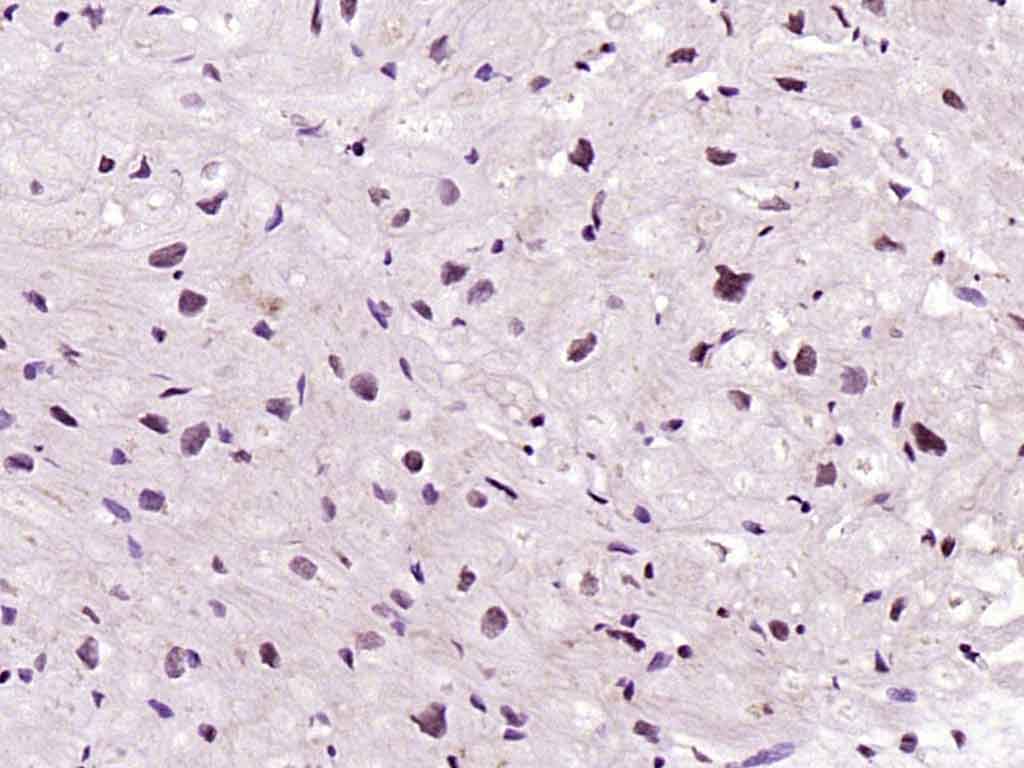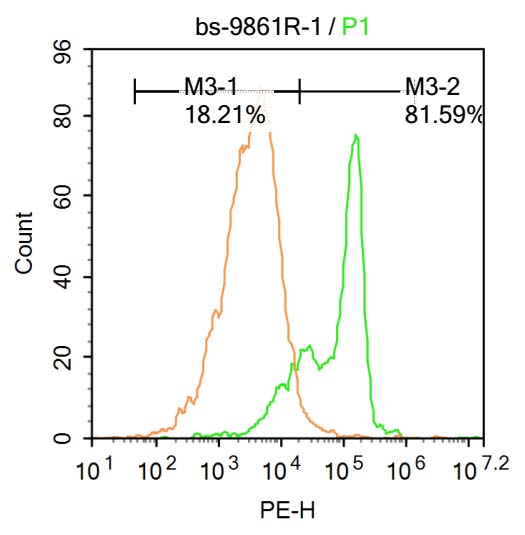
Rabbit Anti-Titin antibody
TTN; MPRM; Cardiomyopathy dilated 1G (autosomal dominant); CMD1G; CMH 9; CMH9; CMPD 4; CMPD4; Connectin; DKFZp451N061; EOMFC; HMERF; LGMD2J; MU RMS 40.14; Rhabdomyosarcoma antigen; Rhabdomyosarcoma antigen MU RMS 40.14; Rhabdomyosarcoma antigen MU-RMS-40.
View History [Clear]
Details
Product Name Titin Chinese Name 扩张型心肌病蛋白1G抗体 Alias TTN; MPRM; Cardiomyopathy dilated 1G (autosomal dominant); CMD1G; CMH 9; CMH9; CMPD 4; CMPD4; Connectin; DKFZp451N061; EOMFC; HMERF; LGMD2J; MU RMS 40.14; Rhabdomyosarcoma antigen; Rhabdomyosarcoma antigen MU RMS 40.14; Rhabdomyosarcoma antigen MU-RMS-40.14; TITIN_HUMAN; TMD. literatures Research Area Cardiovascular Signal transduction Epigenetics Immunogen Species Rabbit Clonality Polyclonal React Species Human, (predicted: Mouse, Rat, Pig, Cow, ) Applications ELISA=1:5000-10000 IHC-P=1:100-500 IHC-F=1:100-500 Flow-Cyt=1ug/test IF=1:50-200 (Paraffin sections need antigen repair)
not yet tested in other applications.
optimal dilutions/concentrations should be determined by the end user.Theoretical molecular weight 3780kDa Cellular localization The nucleus cytoplasmic Form Liquid Concentration 1mg/ml immunogen KLH conjugated synthetic peptide derived from human Titin/CMD1G: 2601-2800/34350 Lsotype IgG Purification affinity purified by Protein A Buffer Solution 0.01M TBS(pH7.4) with 1% BSA, 0.03% Proclin300 and 50% Glycerol. Storage Shipped at 4℃. Store at -20 °C for one year. Avoid repeated freeze/thaw cycles. Attention This product as supplied is intended for research use only, not for use in human, therapeutic or diagnostic applications. PubMed PubMed Product Detail Titin, also known as connectin, is a large protein involved in the temporal and spatial control of the assembly of the highly ordered sarcomeres (contractile units) of striated muscle. In addition to sarcomere assembly Titin also functions to maintain the structural integrity of the contracting myofibrils within the muscle and to organize the machinery for condensation of chromosomes in dividing cells. Titin is a giant protein composed of 27,000 amino acids and contains an autoregulated serine kinase catalytic domain as well as a calcium/calmodulin binding region that are involved in its activation. Activated Titin phosphorylates the muscle protein telethonin, a sarcomeric protein abundant in heart and skeletal muscle, implicating Titin activity in the reorganization of the cytoskeleton during myofibrillogenesis.
Function:
Key component in the assembly and functioning of vertebrate striated muscles. By providing connections at the level of individual microfilaments, it contributes to the fine balance of forces between the two halves of the sarcomere. The size and extensibility of the cross-links are the main determinants of sarcomere extensibility properties of muscle. In non-muscle cells, seems to play a role in chromosome condensation and chromosome segregation during mitosis. Might link the lamina network to chromatin or nuclear actin, or both during interphase.
Subunit:
Interacts with MYOM1, MYOM2, tropomyosin and myosin. Interacts with actin, primarily via the PEVK domains and with MYPN (By similarity). Interacts with FHL2, NEB, CRYAB, LMNA/lamin-A and LMNB/lamin-B. Interacts with TCAP/telethonin and/or ANK1 isoform Mu17/ank1.5, via the first two N-terminal immunoglobulin domains. Interacts with TRIM63 and TRIM55, through several domains including immunoglobulin domains 141 and 142. Interacts with ANKRD1, ANKRD2 and ANKRD23, via the region between immunoglobulin domains 77 and 78 and interacts with CAPN3, via immunoglobulin domain 79. Interacts with NBR1 through the protein kinase domain. Interacts with CALM/calmodulin. Isoform 8 interacts with OBSCN isoform 3.
Subcellular Location:
Cytoplasm. Nucleus.
Tissue Specificity:
Isoform 3, isoform 7 and isoform 8 are expressed in cardiac muscle. Isoform 4 is expressed in vertebrate skeletal muscle. Isoform 6 is expressed in cardiac tissues.
Post-translational modifications:
Autophosphorylated. Phosphorylated upon DNA damage, probably by ATM or ATR.
Similarity:
Belongs to the protein kinase superfamily. CAMK Ser/Thr protein kinase family.
Contains 132 fibronectin type-III domains.
Contains 152 Ig-like (immunoglobulin-like) domains.
Contains 19 Kelch repeats.
Contains 1 protein kinase domain.
Contains 17 RCC1 repeats.
Contains 14 TPR repeats.
Contains 15 WD repeats.
SWISS:
Q8WZ42
Gene ID:
7273
Database links:Entrez Gene: 7273 Human
Omim: 188840 Human
SwissProt: Q8WZ42 Human
Unigene: 134602 Human
Product Picture
References (0)
No References
Bought notes(bought amounts latest0)
No one bought this product
User Comment(Total0User Comment Num)
- No comment




 +86 571 56623320
+86 571 56623320
 +86 18668110335
+86 18668110335

